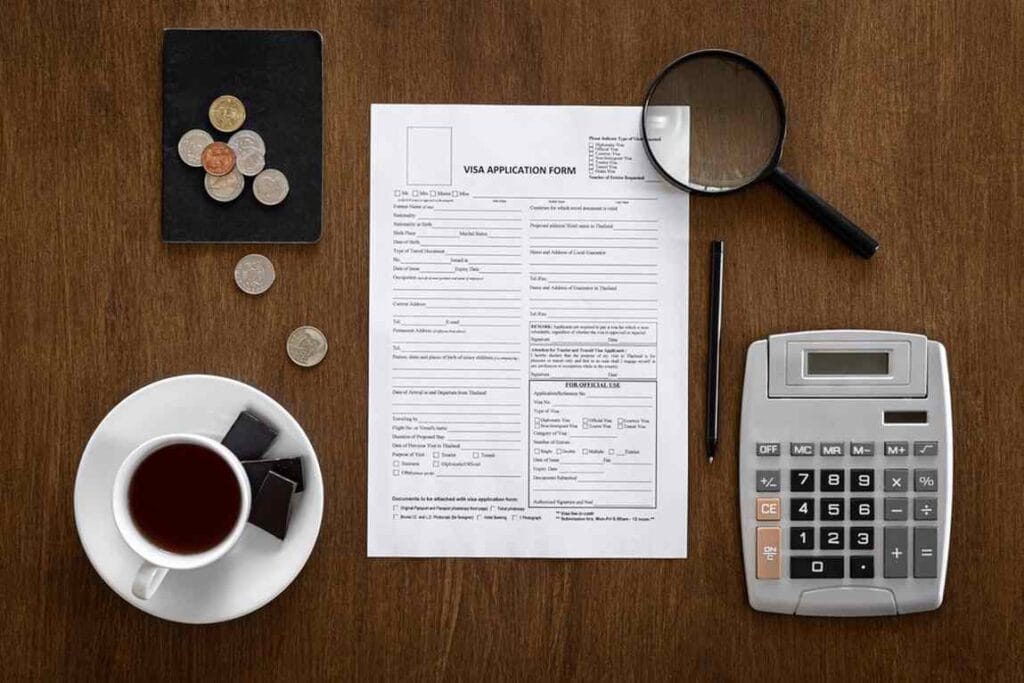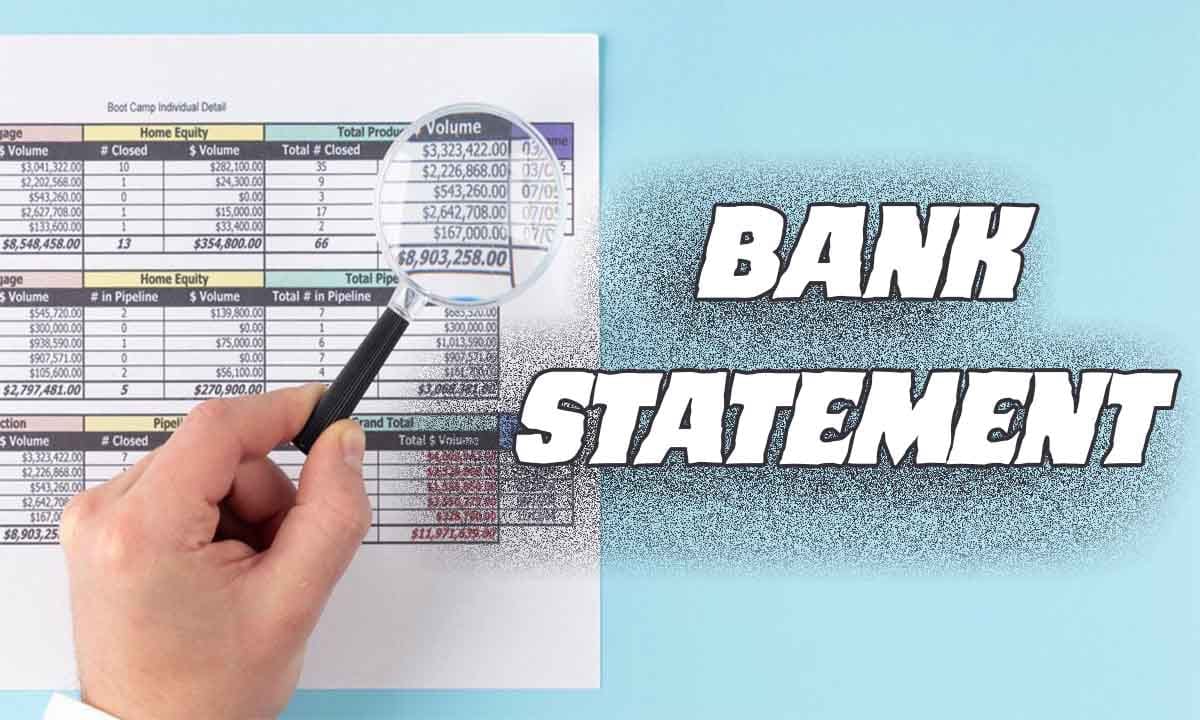Bank statements serve as detailed records of all transactions conducted through your bank account within a specific period. They include deposits, withdrawals, transfers, and charges, presenting a comprehensive view of your financial activity. Understanding these statements is crucial for effective financial management.

Importance of Bank Statements for Personal Finance
Bank statements are indispensable tools for personal finance management. They provide a clear record of your spending and saving patterns, helping you track your financial health. By regularly reviewing your bank statements, you can identify unnecessary expenses, spot discrepancies, and make informed decisions about budgeting and investments.
What Information is Included in a Bank Statement?
Key Elements of a Bank Statement
A typical bank statement includes the account holder’s name, account number, statement period, and a detailed list of transactions. Each transaction entry shows the date, description, and amount. Additionally, statements often include the account’s beginning and ending balance, fees, interest earned, and other relevant financial information.

Types of Bank Statements: Paper vs. Digital
Paper Bank Statements
Paper statements are mailed to your address, providing a tangible record of your financial activities. They are useful for those who prefer hard copies for their records.
Digital Bank Statements
Digital statements are accessible online through your bank’s website or mobile app. They are environmentally friendly, easy to store, and can be accessed anytime, anywhere.
How Often Are Bank Statements Issued?
Most banks issue statements monthly, providing a detailed summary of all transactions within that period. However, some banks offer quarterly or annual statements depending on the account type and customer preference. It’s essential to know your bank’s schedule to stay updated on your financial activities.

Steps to Request a Bank Statement
Accessing Bank Statements Online
Most banks offer online banking services, making it convenient to access your statements. Log into your online banking account, navigate to the statements section, and select the period you need. You can view, download, or print your statement instantly.
Using Your Bank’s Website to Get a Statement
Banks provide a secure portal on their websites where customers can access their statements. After logging in, look for the “Statements” or “Documents” section. Choose the statement period, and you can download or print the document in various formats, such as PDF.
How to Get a Bank Statement via Mobile Banking Apps
Mobile banking apps have made accessing bank statements more convenient. Open your bank’s app, log in, and find the statements or documents section. Select the desired period, and you can view or download the statement directly to your device.
Requesting a Paper Statement from Your Bank
If you prefer a physical copy, you can request a paper statement. Contact your bank’s customer service or visit a branch. While some banks may charge a fee for paper statements, others provide them for free upon request.
Getting a Bank Statement in Person at a Bank Branch
Visiting a bank branch is another way to obtain your statement. Speak with a representative who can print your statement on the spot. Ensure you have proper identification to verify your account ownership.
Automated Teller Machines (ATMs) and Bank Statements
Certain ATMs offer the option to print a mini statement, which includes recent transactions. Insert your debit card, enter your PIN, and select the “Mini Statement” option. Note that this may not provide a comprehensive statement but is useful for quick reviews.
Can You Get a Bank Statement from a Third-Party Financial App?
Some third-party financial apps can link to your bank account and provide transaction summaries. However, for official bank statements, it is advisable to use your bank’s services to ensure accuracy and security.
Understanding Bank Fees for Statements
Banks may charge fees for providing paper statements, especially if you request them frequently. Digital statements are usually free. It’s essential to be aware of these fees to avoid unnecessary charges and manage your preferences accordingly.
How to Read and Understand Your Bank Statement
Key Sections of a Bank Statement
Reading a bank statement involves checking the account summary, transaction details, and any fees or charges. Ensure the transactions listed match your records. Understanding your statement helps you spot errors and manage your finances more effectively.
Common Issues When Requesting a Bank Statement and How to Resolve Them
Sometimes, you might face issues like delays, incorrect information, or trouble accessing your statement. Contact your bank’s customer service to resolve these problems. They can guide you through troubleshooting steps or provide alternative solutions.
Why Your Bank Statement May Be Delayed
Delays in receiving your bank statement can occur due to postal issues, system errors, or account verification processes. If you experience delays, check your online banking account or contact your bank for assistance.
Security Tips for Handling Your Bank Statement
Keep your bank statements secure to protect your financial information. Shred paper statements before disposal, use strong passwords for online accounts, and be cautious about sharing your financial details.
How Long Should You Keep Your Bank Statements?
It’s advisable to keep bank statements for at least one year. For tax purposes, keeping them for up to seven years can be beneficial. Digital storage solutions can help you maintain records without physical clutter.
Digital Storage Solutions for Your Bank Statements
Store your digital statements securely using cloud storage services or encrypted external drives. Regularly back up your files to prevent data loss. Organize statements by date and type for easy access.
Using Bank Statements for Budgeting and Financial Planning
Bank statements are valuable tools for budgeting and financial planning. Review your income and expenses to identify spending patterns. Use this information to create a realistic budget and set financial goals.
How Bank Statements Help in Tracking Expenses and Income
Regularly reviewing your bank statements helps you track your expenses and income accurately. This practice ensures you stay within your budget, identify areas to cut costs, and manage your finances effectively.
Ensuring the Accuracy of Your Bank Statements
Verify the accuracy of your bank statements by comparing them with your personal records. Report any discrepancies to your bank immediately. Regular checks prevent potential fraud and financial errors.
Disputing Errors on Your Bank Statement
If you find errors on your statement, contact your bank promptly. Provide necessary documentation and details to support your claim. Banks have protocols for investigating and correcting such errors.
How to Use Bank Statements for Tax Preparation
Bank statements are crucial during tax season. They provide a record of your income, expenses, and interest earned, which are essential for accurate tax filing. Organize your statements to streamline the tax preparation process.
Getting a Bank Statement for Mortgage Applications and Loans
When applying for mortgages or loans, banks require recent bank statements to assess your financial stability. Ensure your statements are up to date and accurately reflect your financial health.
International Bank Statements: What You Need to Know
If you have international bank accounts, understanding the differences in statement formats and terminologies is essential. Ensure you can access and interpret these statements for comprehensive financial management.
What to Do if You Lose Your Bank Statement
If you lose a bank statement, you can request a duplicate from your bank. For digital statements, you can easily download another copy from your online banking account. Keep a backup to avoid future issues.
Frequently Asked Questions (FAQs)
Is a bank statement proof?
A bank statement can serve as proof of various financial aspects, such as proof of funds, proof of income, and proof of transactions. It is commonly used in situations like applying for loans, visas, or financial aid, and during tax preparation or legal proceedings (Investopedia) (SuperMoney).
How to make a bank statement?
You cannot “make” a bank statement in the sense of creating one yourself; instead, you request it from your bank. Banks generate statements monthly, summarizing all transactions. You can access these via online banking, mobile apps, or by requesting a paper copy from your bank (SuperMoney).
Can I get a bank statement as a PDF?
Yes, you can typically download your bank statement as a PDF from your bank’s online banking portal or mobile app. This format is convenient for digital storage and easy sharing when needed (SuperMoney).
Who can see my bank statement?
Your bank statement is confidential. Only you and your authorized bank representatives can see it. However, you might share it with third parties, such as loan officers, landlords, or financial advisors, for verification purposes (DocuClipper).
Can I get a bank statement from an ATM?
Some ATMs provide the option to print a mini statement or a transaction history, but this is not a full bank statement. For a comprehensive statement, you would typically need to access your online account or visit a bank branch (SuperMoney).
Is it safe to share a bank statement?
Sharing your bank statement is generally safe if done with trusted entities like banks, employers, or legal representatives. Always ensure you share it securely, avoiding public or unencrypted platforms to prevent unauthorized access to your financial information (DocuClipper).
How to get a bank statement certificate?
To obtain a certified bank statement, you need to request it from your bank. This process involves contacting your bank, either online or in person, and asking for the statement to be officially stamped or signed for authenticity. This type of statement is often required for legal or official purposes (DocuClipper).
Can I get bank statements from 15 years ago?
Retrieving bank statements from 15 years ago can be challenging. Most banks keep records for up to 7 years. If you need older statements, contact your bank directly to see if they can access archived records, though availability will vary (SuperMoney).
Can I get a bank statement from any branch?
You can typically request a bank statement from any branch of your bank. However, the ease of access might vary, and you might need to go to your home branch or use online banking for detailed statements (SuperMoney).
Where can I find my bank statement?
You can find your bank statement through your bank’s online banking platform, mobile banking app, or by requesting a paper statement through mail or at a bank branch (SuperMoney).
Who asks for bank statements?
Various entities may ask for your bank statement, including lenders, landlords, financial advisors, visa authorities, and legal representatives. These requests are usually for verifying your financial status and transactions (SuperMoney).
What works as a bank statement?
A bank statement is an official document from your bank detailing all transactions in your account over a specific period. For many purposes, such as applying for loans or visas, an official bank statement issued by your bank is required (DocuClipper) (SuperMoney).
What is a bank statement proof of?
A bank statement serves as proof of your financial activity, including income, expenses, and account balance. It is often used to verify your financial stability and transaction history in various applications, such as loans, visas, and legal matters (Investopedia) (DocuClipper).









